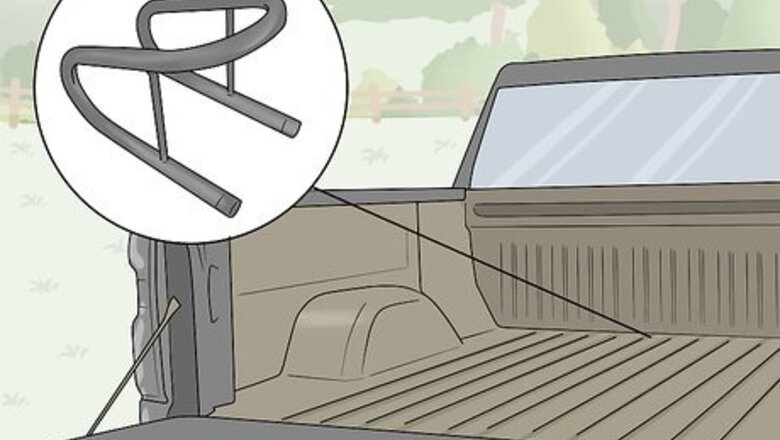
views
- Attach a wheel chock to the trailer bed and use a ramp to load the motorcycle into the trailer.
- Hold the bike upright and secure it with tie-down straps; loop straps around each front suspension tube and secure them to a ratchet strap.
- Tie a strap parallel to the rear tire and wrap it around the tire, attaching it to a ratchet strap on the opposite side of the trailer; tie down loose strap ends too.
Getting the Motorcycle into Position
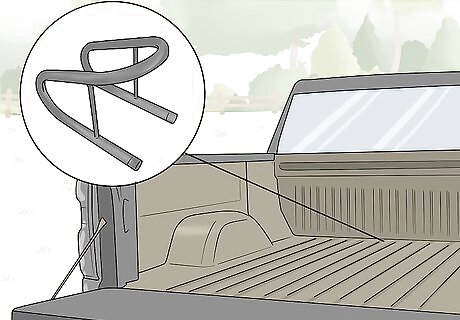
Attach a wheel chock to the back of the trailer bed. A wheel chock is a slot for the front tire. It keeps the tire straight while the motorcycle is in transit. Start by attaching a chock to your trailer or truck bed. Position it at the back of the bed and center it. Then bolt it down. Wheel chocks are available at automotive stores or online. Some trailers have holes for attachments like wheel chocks already in place. Look for pre-made holes for the bolts. You can also install a wheel chock temporarily if you don’t want to worry about attaching screws and bolts. Position it the same way, then tie it down with ratchet straps. The strap tension will keep the chock secure.

Load the motorcycle into the trailer with a ramp. Use a specialized motorcycle ramp that can support the weight of your bike. Attach the ramp to the trailer bed. Then gently roll the motorcycle up into the truck bed. Don’t let go of it at any point or it will tip over. This is much easier with two people, one holding on each side. Some utility trailers have built-in ramps, or are low enough that you won’t need a ramp. Don’t use wooden planks for this job. They may not support the weight of the motorcycle. If you’re loading the bike into a pickup truck, remove the tailgate if you can. They sometimes can’t handle the weight of a motorcycle, and could break.
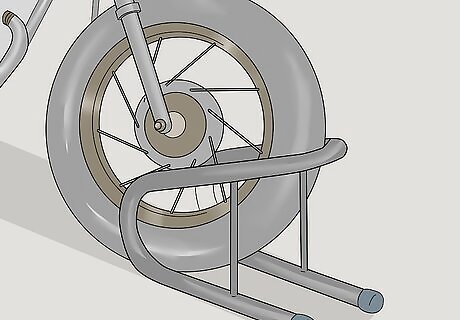
Position the front wheel into the wheel chock. Roll the bike to the back of the trailer and rest the front wheel in the chock. On most chocks, the mechanism clicks when the front wheel fully enters it. When you hear this click, the bike is in the correct position. Do not lower the kickstand. You can put it out temporarily while you gather your equipment, but raise it before you tie the bike down.
Securing the Front Wheel
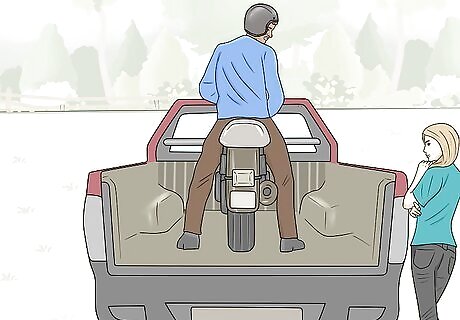
Hold the bike upright. If you’re working with another person, this job is much easier. Have them hold the bike straight upright, without leaning towards one side. The easiest way is for the other person to sit on the bike like they’re riding it and plant both their feet. If you don’t have a partner to work with, you can still secure the bike. Use the kickstand while you’re getting everything into position, but raise it before you tie the bike down.

Tie one end of the strap to the side of the trailer in line with the front tire. Use standard tie-down straps that are available at a hardware store. Move up so you’re even with the front tire. It doesn’t matter which side you start on. Then tie the end of one strap to the trailer body. Pull on it to make sure the knot is secure. Some trailers and trucks have designated tie-down spots. Look for hooks or loops indicating a tie-down point. If your trailer doesn’t have these, then tie the strap to a side bar on the trailer. Don't use plain rope for this job. Rope won't work with a ratchet, so you won't be able to get it tight enough.
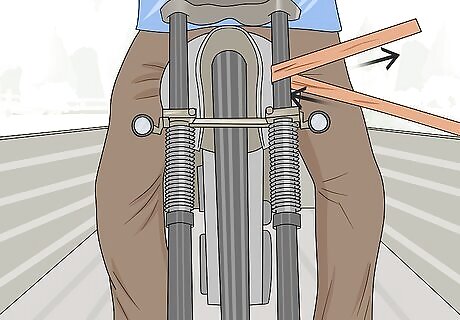
Loop a strap around one of the front suspension tubes. Start on the suspension tube on the same side that you tied the strap. Loop around the tube, above rubber parts of the shock absorber. Some motorcycles have a cross brace designed for tying. Check if your motorcycle has this attachment. Don't wrap the straps around the shock absorbers, the rubber parts of the suspension.
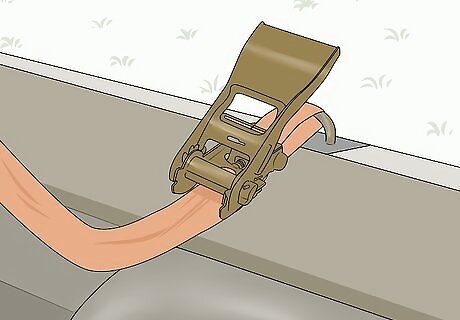
Secure the other end of the strap to a ratchet strap and tighten it. Tie a rope with a ratchet strap attached to it to the trailer in front of the front tire. Loop the first strap through the ratchet strap, then crank the ratchet to tighten the strap. Stop when the strap is taut. If you have a partner, have them sit on the bike so you don’t pull the strap all the way to one side.

Repeat the process on the opposite side of the front wheel. With one side secure, even the bike out with another strap. Use the same process on the other side of the front wheel. Tie the strap to one side, loop it around the suspension tube, then tighten it with a ratchet strap. The equal force will keep the bike held upright. Try rocking the bike back and forth to make sure the straps are equally-taut. After the front wheel is secure, your partner can stop holding or sitting on the bike.
Wrapping the Rear Tire
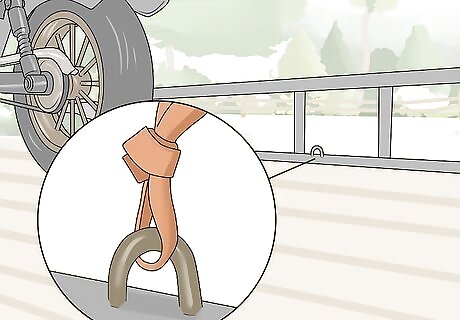
Tie a strap parallel with the rear tire. When the front tire is done, move on to the rear tire. Line up the strap with the rear tire, on either side, and tie it to the trailer at this point. If the trailer has hooks or other tie-down attachments, secure the strap to this point.
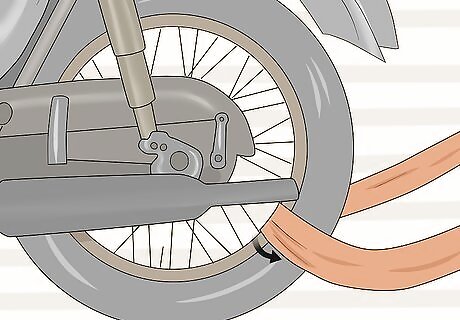
Wrap the strap around the rear tire. Pull the strap towards the tire and loop it through. Wrap the tire with one complete rotation, then pull the strap towards the other side of the trailer. Make sure you only wrap the strap around the tire, not around any spokes.
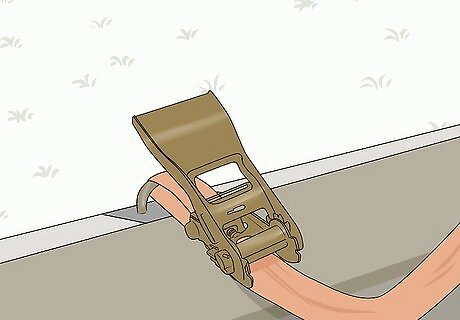
Attach the strap to a ratchet strap on the opposite side of the trailer. Tie the ratchet strap to the opposite side of the trailer. Then loop the strap through the ratchet. Crank it to tighten the strap, and continue until it pulls taut.
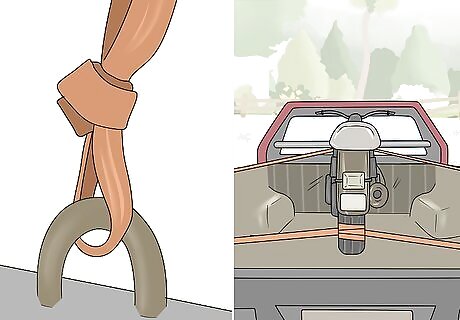
Tie down the loose strap ends so they don’t flail. Flailing straps can damage your car and motorcycle if you drive at high speeds. Finish the job by securing all the ends. Either tie them to the trailer, or loop them around the tightened strap portion and tie a knot. Monitor the straps as you drive. Glance through your rearview mirror to see if any have come loose, and pull over to tie them back down if they have.


















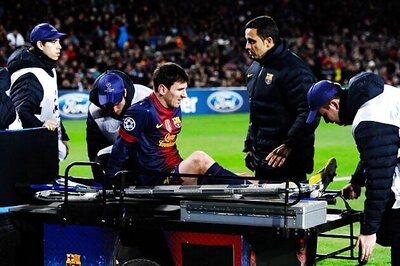

Comments
0 comment